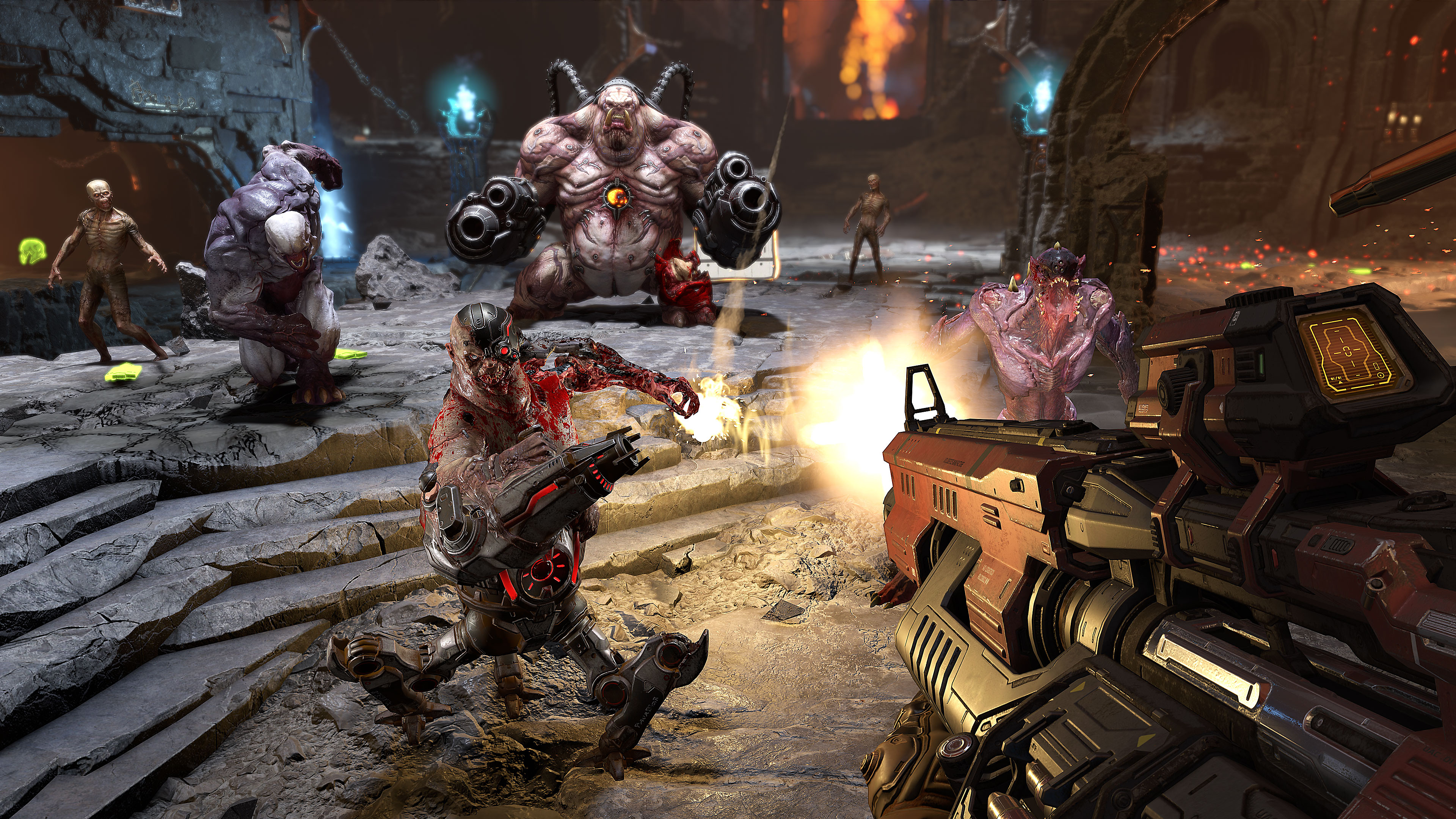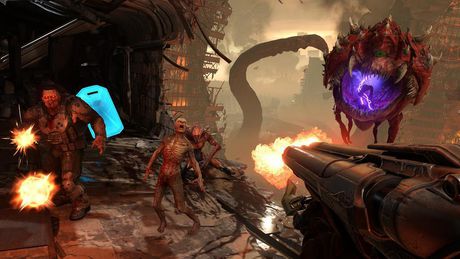It’s been a little over 10 years since I ran home from a morning university lecture, in the hope that a pre-ordered copy of Fallout: New Vegas arrived at my door. I recently played through the game again, complete with all of the DLC, and it struck me just how well the experience held up. When I first started playing back in 2010, I wasn’t expecting much more than a glorified Fallout 3 expansion pack, much less for it to still be one of the best games of the franchise as of 2020.
The first two Fallout games went over my head (which I have since rectified), and Fallout 3 was the first installment that really hooked me in. And it really did hook me in – I had completed the base game, along with a couple of DLC packs, multiple times. When the reveal trailer dropped for New Vegas, it came as a little bit of a surprise, given the relatively short amount of time that had passed since the previous game, and my feelings were mixed. If I had experience of the early Fallout titles, and knew that the creators of those games were handling the development this time around (Obsidian Entertainment – formerly Black Isle Studios), I would have had no doubt that New Vegas was going to be good.
In terms of gameplay changes, Obsidian did not reinvent the wheel, but they did modify it. Improvements have been made to the Fallout 3 framework in small, but noticeable ways. Most guns now have iron sights, and overall, the weapons, while still a little clunky, seem to have a little more weight to them. You can also upgrade and modify weapons in various ways, and load special ammo, giving the already large roster of weapons even more variables. Speech is also tweaked in a way that opens up interesting avenues, as investing in different skills can open up different dialogue options – this allows for something as small as a funny dialogue choice, or as major as changing the solution to a certain quest.
As you’d expect from a game that is set in the desert, the map is far more open, and far more sandy than anything you saw in Fallout 3. This is a pretty stark and refreshing change from the labyrinthian sewers and train tunnels of The DC Ruins, but attempting to make a home run for your mid-game objective is ill advised at best. The most direct routes are inhabited by some of the most dangerous enemies in the game – Cazadors (giant Tarantula Hawks who roam in packs) and Deathclaws (fast, giant reptiles, made mostly of spikes). This method of funnelling the player is a modern spin on a technique dating back to the early Fallout titles, and is known in some circles as the “meat wall”.

To avoid these monstrosities, you have to take the path of least resistance; this happens to be the longest route. A cynical take on this would be that it’s artificially padding the game, which is valid, but as you explore the settlements on the way, you are organically introduced to several factions, both big and small. This change in exploration does play a part in the storytelling – in Fallout 3, the separation between side quests and main plot is quite distinct, but in New Vegas, the two blend together quite seamlessly, for the first act of the game, at least.
While these changes to the gameplay do improve upon Fallout 3’s shortcomings, I think that the story of Fallout: New Vegas has allowed it to stand the test of time. You play a courier, who is on a vengeful quest to find the person who left you for dead. Along the way, you are thrust into a power struggle between some of the larger factions in the region. One of the biggest players, The NCR are a well meaning, but meddling organisation, who are well established in the Fallout canon. The NCR’s most formidable opponent, Caesar’s Legion, are essentially a conglomerate of tribes, who base their entire way of life around the ancient Romans, and they have plans to absorb the West Coast of America into their empire.
New Vegas – a small part of what remains of current day Las Vegas, is seen as the main hub of The Mojave Wasteland. The Strip (which is home to several Casinos and their respective gangs) comes complete with the corruption that would most likely take place in a post-apocalyptic version of it. Booze, gambling and prostitution are encouraged on The Strip, while weapons and drugs are sold just beyond the walls of it, in the slightly more run-down and anarchic Freeside.

The Legion seek to rid the corruption that is rampant in The Mojave, but are cut-throat and ruthless in their methods. A town you come across early on, Nipton, is a good example of this. Nipton is a den of iniquity, and allowed both NCR troops, and gang members to indulge in whatever vice they happened to prefer. This was until The Legion took over and held a lottery with the town’s residents – the losers were either enslaved, crucified, or executed outright. Most people would automatically assume that this shitty conduct would make them the bad guys on balance, and I consider myself part of that crowd. Dig a little deeper though, and their iron fist approach has ensured that there is zero tolerance on drugs and crime in the areas that they have already colonised, and any tribes or gangs in their territory have either been exterminated, or absorbed into the legion. In their own fucked up way, they want what is best for The Mojave Wasteland.

The NCR are not without fault though. They are idealistic, and at the core, also want to bring order to the West Coast of America, albeit with less archaic measures. Their control in The Mojave is crumbling though, due to complacency and sustained skirmishes with both the Legion, and the smaller tribes that they coexist with. They have a complicated history with factions like The Great Khans and the Brotherhood Of Steel (both encountered in previous games), and there have been numerous incidents in which the NCR haven’t always been the knights in shining armour that they first appear to be.

This is just one aspect in a multi-layered story though. The political affairs of New Vegas, and The Mojave Wasteland as a whole, involve crime families, gun runners, chem fiends and many more. Just about every group has a backstory that makes it feel like the person you are either talking to or beheading is more than just “Raider #346”, even if their faction is mostly hostile towards you by default.
As you go through the game, you are trusted to take the information that you have on the society of The Wasteland, and base your choices on that, along with your own moral compass. As I said earlier, most people (including myself) would probably draw the line somewhere with The Legion, and say “hey, I’m not sure if I could support people who keep slaves and kill babies”. Morally, you’d be right, but if you do want to follow their questline, or even make a difference to how they handle things, you can pursue that, just as you did in the early Fallout games. This adds to the replay value, as during your first playthrough, you may go with your own personal convictions, but because you can’t please every faction, certain outcomes to quests get locked off at pivotal points in the story. The only way to see all of these outcomes is to play through again as a new character.
When I came back to New Vegas, I was half expecting it to be something to pass a bit of time during the pandemic, but I was taken aback by rediscovering the quality of writing that has been seldom seen in games since. Quite a few evenings were spent trying to find quests that I may have overlooked in the past, and approaching old problems with new ideas.
On a final note, the PC I had back in 2010 probably would have exploded if I tried to play this game, so I first experienced it on Xbox 360. Now that I have a PC that is slightly more capable, I have been playing on that, and it does make a difference. The tactile differences to the UI and controls make things feel more deliberate – things like selecting inventory and dialogue options make you actually stop and think, rather than just pressing X to proceed. Perhaps it’s because I’m now 30 and have milked the game dry, but it was strange to me how a simple change in platform can add a different angle to the game.
As I purchased the game on GOG, it came with all of the DLC, which takes the storyline in new and interesting directions, while also building on established themes. Not only that, but I have been dipping my toes into the expansive modding scene, and found a few which improve the visuals and sound, and also adds hours worth of gameplay. In my next post, I’ll be looking at all of the DLC packs, and some of the more interesting mods that I’ve discovered for the game.









